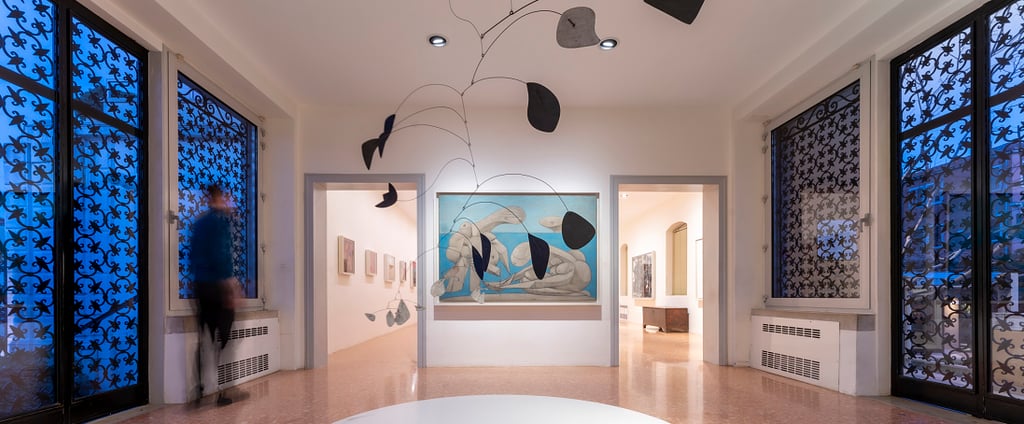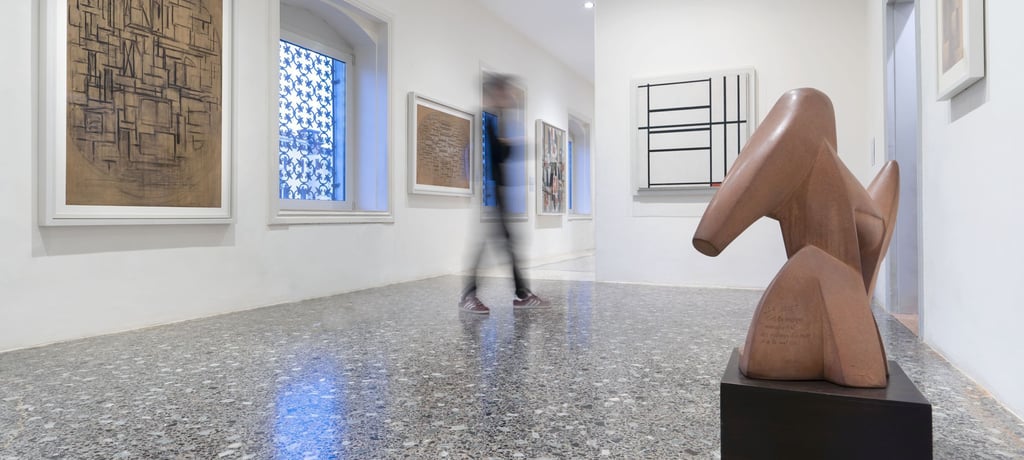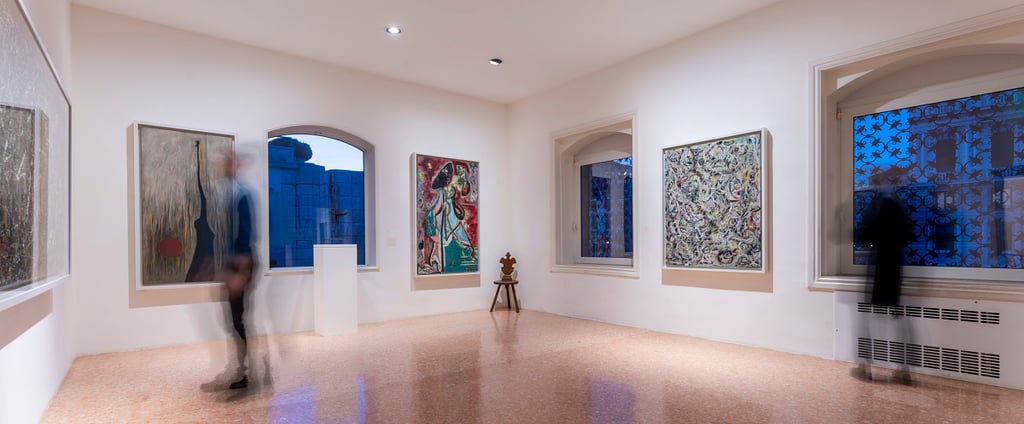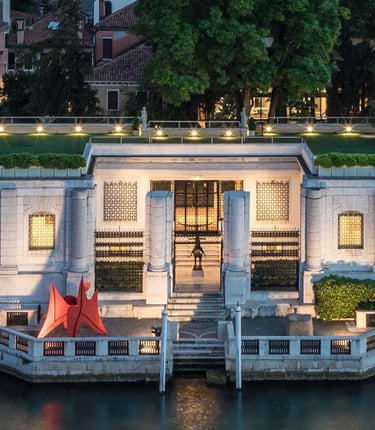Peggy Guggenheim Collection – Venice: A Canal-Side Gem of Modern Mastery
Discover the audacious spirit of Peggy Guggenheim as her private collection brings avant-garde brilliance to the heart of Venice's Grand Canal forever.


From Personal Vision to Cultural Phenomenon
Perched on the edge of Venice’s Grand Canal within a serene 18th-century palazzo, the Peggy Guggenheim Collection is nothing less than a modern art miracle. It emerged from the passion of Peggy Guggenheim, an American heiress whose restless spirit and thirst for innovation fueled the creation of one of the most cherished collections of 20th-century art in the world. Rather than forming part of a state museum or corporate institution, this museum remains the preservation of a deeply personal journey—a creative odyssey that began in New York, traversed London, and culminated in Venice, where Guggenheim found her artistic home.
Her story begins in the 1930s amid turbulent global politics and a Parisian avant-garde, moves into the gestating world of American abstract expressionism, and ends immersed in the canals and carpets of Venice. Each painting, sculpture, or installation in her collection is an artifact not only of art history but of Guggenheim’s curatorial eye, her personal friendships with artists, and the bold encounters between movement and medium that defined the 20th century.
Peggy Guggenheim: Innovator and Collector
Marguerite "Peggy" Guggenheim was not born to collect art. She was born into wealth, but it was her restless intellect and fierce integrity that propelled her towards an unexpected destiny. Rejecting comfortable aristocracy, she became an activist, a publisher, a businesswoman, and most importantly, a champion of modernism. In 1938, she acquired Palazzo Venier dei Leoni, a half-finished Baroque palace whose broken lines and unfinished ramps spoke to her sense of possibility. This liminal space became a crucible for modern ideas, a vessel for the disruptive power of art.
Within its rooms, Peggy entered into dialogues with Duchamp, Dalí, Miró, and Picasso. She backed Pollock, Rothko, and de Kooning when their names were obscure. Each acquisition followed a story of encounter: a late-night conversation, a magazine she edited, or a gallery in which she intervened. The result is not a bland survey of style movements but a living ecosystem of art as adventure—full of conflict, curiosity, discovery, and intimacy.
Practical Information for Visitors
The Peggy Guggenheim Collection is located along the Grand Canal in Venice’s Dorsoduro district, accessible by vaporetto or vaporetto taxis. The museum is open six days a week with hours varying by season; it closes Mondays. Entry requires tickets, which are available in advance online with time slots that ensure a relaxed flow through the palazzo. Audio guides are available in multiple languages and the museum app offers augmented reality features detailing artworks and architecture.
Accessibility features include ramps, elevators to reach the upper floors, and accessible restrooms. The museum shop offers art publications, posters, and object reproductions (often of Peggy’s eccentric design choices), while a stylish café serves light Venetian fare amid canal views. Visitors are also invited to apply for courses, workshops in contemporary practice, and seasonal evening events such as poetry readings or film screenings.
Visit the official website here: https://www.guggenheim-venice.it
Curation in Dialogue with Venice
Peggy was conscious of place. She intentionally filled her palazzo with works that resonated with Venetian traditions—girls on gondolas, reflections of Byzantine light, surreal compositions that address Venice’s contradictions. These conversations continue today: exhibitions often reference the lagoon environment, its history of art, trade, and cultural cross-pollination.
Cantieri of artists operate in and around the museum; regional students collaborate in installations; the museum theater hosts film screenings that explore Venice’s imaginary life. Each summer, the Venice Biennale overtakes the city; the Peggy Collection becomes a node, a lab, a meeting ground for ideas that ripple across global artistic networks.
Connecting Past, Present, and Future
Peggy’s will offered the museum to the Solomon R. Guggenheim Foundation—with directives that ensured her collection remain intact. The Building itself must remain open, accessible, and alive to the future. Under foundation stewardship, the palazzo remains a renewable organism. Conservation preserves the artworks, but installations continue; artists continue to engage the collection; new programs expand social and cultural horizons, including initiatives in environmental awareness, architecture, and Venice’s role as an ancient—and endangered—city.
Her legacy becomes increasingly relevant in a world asking: how do we hold onto authenticity, personal risk, and relationship in a world of globalization, commodification, and hybrid identities? The Peggy Collection remains a living testament to the curatorial self—a reminder that art is not just about display but about the choices, passions, intuitions, and encounters of individuals.
A Visitor’s Journey of Discovery
The route through Palazzo Venier dei Leoni is purposeful yet unpredictable. Some rooms echo with Child’s play, where Giacometti’s childlike forms meet early Rothkos. Others close with single phrases—a solitary Mondrian, a late Duchamp faucet. Every corner holds a story: a love affair with Marcel Duchamp; a friendship with André Breton; an argument with Jackson Pollock over drip chronology. Visitors witness a woman who defied expectation, invited the world, and left an improbable gift in a crumbling Venetian palace.




An Architect of Artistic Constellations
The gallery is arranged less as a chronological catalog than as the reflection of a mind shimmering with ideas. The palazzo becomes a labyrinth of emotive density, where rooms are cloaked in color, sculptures float on light carpeted floors, and staircases curve like cinematic gestures. The emphasis is on experience rather than linearity; the boundaries between painting, sculpture, and installation melt away.
One enters into the pulsating world of cubism and surrealism: Kandinsky, Léger, Ernst, Magritte. One encounters the dripped intensity of Pollock, the frozen tension of De Kooning, the brittle verticality of Giacometti, the quiet symmetries of Mondrian. Peggy’s brief affiliation with abstraction marks every wall and corner, colonized with paintings written in color, gesture, chance. Yet among them, European modernists hold court, their syntactical innovations speaking across national borders and traumatic histories.
The collection is not static. Guest curators arrange thematic installations—some responsive to Venice, some to contemporary debates. For Guggenheim, curation was an act of narrative and risk. The museum’s annual program echoes this legacy: scholarly exhibitions, residencies, performances, poetry evenings, musicians spilling out onto its courtyard. The Palazzo becomes a palimpsest of aesthetic energy.
Courtyard, Garden, and the Grand Canal
One of the most enchanting features of the Peggy Guggenheim Collection is its integration with Venice itself. The open courtyard faces the canal, a secret window onto maritime life and Venetian skies. Sculptures punctuate its greenery—such as Giacomo Manzù’s Madonna, placed in dialogue with Pollock’s Painted Bronze. The Garden of Peggy reveals itself like a transitional world: half natural sanctuary, half exhibition display.
Beyond the courtyard, many rooms offer direct glimpses of the canal, framed like living paintings. Morning light pours into Breton’s canvases, and even Pollock’s abstractions are transformed by ripples. The sound of gondolas, church bells, and overhead gulls becomes part of the acoustic palette. Here art is not sterilized; it breathes. The edge where gallery meets lagoon is an invitation to see modern art within a living city.
Famous Works That Defined a Century
The collection breathes with works that shaped 20th-century artistic language. Pollock’s Number 31 or Convergence thrash the canvas with primal energy; Giacometti’s The Woman with her Throat Cut confronts mortality with skeletal immediacy; Magritte’s The Anticipation cross-examines representation itself; Picabia’s mechanical abstractions stand as both homage and critique of progress. Yet each one is contexted by Peggy’s choices, and each echoes her belief in art that unsettles and transforms.
Her collection isn’t about completeness but about encounters: Richter meets Johns; Tanning meets Tanguy; Breton meets Beuys. There are crescendo rooms, where tension tightens, and quieter spaces of reflection, where moments of stillness cut through visual noise. The walls are timed with seasonality: summer installations of airy sculptures; winter rooms of sky-bound abstractions. Seasonal shifts in atmosphere change perception; such nuances are integral to the experience.








